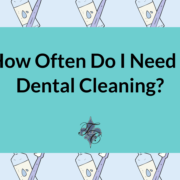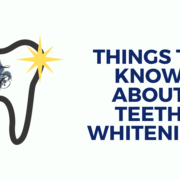How to get rid of white spots on your teeth
White spots on your teeth can be worrisome if you do not know how they got there or how to treat them. On top of that, white spots on your teeth can be unsightly, which can take a toll on your confidence. These spots are typically a cosmetic issue but can turn into a health concern. If it goes untreated, the problem can lead to tooth deterioration.
Causes of White Spots on Teeth
If the spots have been present since you were a child, you may have experienced a disruption in enamel formation as your teeth grew. This is better known as enamel hypoplasia. White spots can also appear in childhood when kids ingest too much fluoride toothpaste, called fluorosis. Both of these causes of white spots on teeth are common in childhood and lead to lasting spots on teeth.
White spots that have formed more recently on adult teeth are often caused by plaque build-up. This can cause hard, scaly spots near the gum line and make the teeth look discolored. The most concerning reason for white spots on teeth can be the beginning stages of tooth decay or cavities, as these problems sometimes look like white spots in the early stages. As bacteria produce acid, it begins dissolving the mineralized surface of a tooth, appearing bright white. Lastly, braces can leave such spots but can be avoided with the proper care.
Treatment of White Spots on Your Teeth
There are various methods by which a dentist can get rid of calcium deposits from your teeth. Your dentist might whiten the teeth to remove calcium deposits by concealing the discoloration. If the whitening process does not work, there are a few more options. There is the air abrasion procedure, in which your dentist will use a device that blows crystal particles towards the calcium deposit. They can fix any remaining spots with filling material. This treatment of white spots is called microabrasion; this is a process where the dentist rubs a mixture of pumice and acid on the teeth to get rid of white teeth spots. However, if the white spots are very large, microabrasion might not be a viable option. In that case, a porcelain crown or a cap is necessary to cover up the spot or spots.
Prevention of White Spots on Your Teeth
If you don’t currently have white spots, you should opt for prevention techniques for white spots. You can start by practicing good oral hygiene. You must brush and floss your teeth at least twice a day and visit your dentist after every six months for a regular dental check-up.
Do your best to avoid acidic and sugary drinks and foods that can damage your tooth enamel. If you wear braces, you must take additional steps to take excellent care of your teeth so that when the braces are removed to expose your straightened teeth, you don’t have to worry about unpleasant spots.
Bottom Line
At Tim Chauvin, DDS & Associates, we know it can sometimes it can be difficult to determine what white spots mean. In these cases, it’s better to visit experienced and qualified doctors who will guide you.
Too often, it is an early sign of tooth decay that can be handled, but you must visit a dentist. We will be able to assess the damage and recommend treatments that are suitable for your situation. Contact Dr. Chauvin today to make an appointment.





